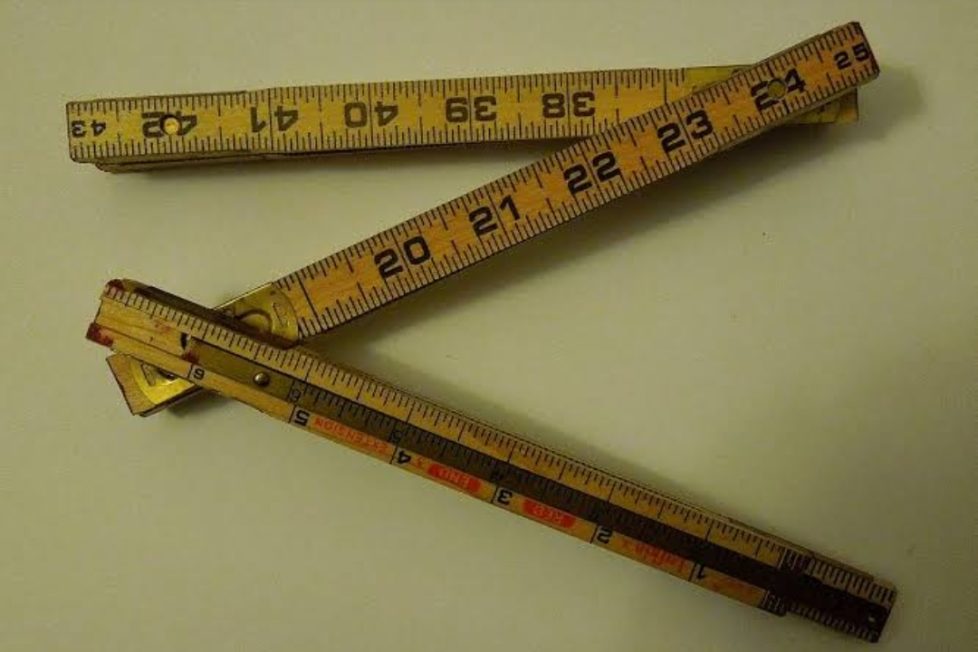Ancient Indian Discoveries – Ruler


Namaste
As we already know that science have their own limitation to measure the age of ancient period and still scientist are struggling to get a method which can help to measure exact time period of epic history but by using carbon dating method , they have found ruler ( A measurement instrument ) with limited information and make a hypothesis for their time period .
Around 2400 BC, In saraswati river ( In haryana ) and areas of the Indus Valley Civilization in both now-Pakistan and Western India have had rulers of ivory uncovered from ruins. One such specimen was even calibrated to 1/16 of an inch—less than 2 millimeters. These kinds of rulers were clearly very prominent, as even bricks of the valley’s buildings were found to follow the same measurements.

As we know that , Mathematics and Science both are related if we are talking about measurement and scaling with fundamental unit system, since, as with other arts, architects use ruler and other measurement instrument for several reasons. Apart from the ruler needed when engineering building, temple use geometry in ancient period of india precisly: to define the spatial form of a building; from the Shulba sutras , considered to be appendices to the Vedas , to create forms considered harmonious, and thus to lay out buildings and their surroundings according to ruler with scientific method, aesthetic and sometimes religious principles; to decorate buildings with mathematical ruler based objects such as tessellation; and to meet environmental goals, such as to minimise wind speeds around the bases of tall buildings.

To dive further deep into:
Firstly, let’s understand the educational system(s) of ancient time in order to understand the principles of design of ruler.
For example – The Education system of Ancient India
The education system of ancient period has unique characteristic and qualities which were not found in the ancient education system of any other country in the world. Gurukul (ashram) was a type of school in ancient India, residential in nature, with pupils living in proximity to the teacher (guru). In a gurukul, students would reside together as equals, irrespective of their social standing, learnt from the guru and distribute work in themselves to help the guru in his day-to-day life. The high reverence which was primarily intended for the teacher of the Vedas, was extended in course of time to his humbler confrere, who initiated the young pupil in the mysteries of the 3 r.s. or taught him the teach unique of a profession. The teachers on their part recognized the responsibility of their position.
Ideals of Vedic Education
Liberation
The aim of ancient Indian education was initially laid down by the Vedas. According to vedic world view the world is pervaded by divinity and the aim of every living being is to achieve liberation. Thus according to the Vedas the aim of education is liberation. According to a famous statement, “that is knowledge which give liberation.” therefore, a. s. altekar has rightly pointed out, “the knowledge is athird eye of man, which give him insght into all affairs and teaches him how to all round progress and prosperity.
Control of Mind
The cause of liberation and bondage according to vedic thinkers. Therefore, liberation is possible only through the control of the mind. The ancient Indian education was even more developed by the Upanishads. While in the field of religion the Upanishads were more introvert and monistic, they continued the tradition of the Vedas.
Conclusion
Knowledge was passed on orally from one generation to another in ancient india. education involved three basic processes, one, which included ‘sravana’(stage of acquiring knowledge of ‘shrutis’ by listening). Two, ‘manana’ (meaning pupils to think, analyze themselves about what they heard, assimilate the lessons taught by their teacher and make their own inferences,) and three ‘nidhyasana (meaning comprehension of truth and apply use it into real life).
Ruler based Architecture of Ancient India
Vaastu Shastra, the ancient India canons of architecture and town planning, employs symmetrical drawings called mandalas in which ruler was play a major role and complex calculations are used to arrive at the dimensions of a building and its components. The designs are intended to integrate architecture with nature, the relative functions of various parts of the structure, and ancient beliefs utilizing geometric patterns (yantra), symmetry and directional alignments.
The mathematics of fractals has been used to show that the reason why existing buildings have universal appeal and are visually satisfying is because they provide the viewer with a sense of scale at different viewing distances.
The ideal form gracefully artificed suggests the infinite rising levels of existence and consciousness, expanding sizes rising toward transcendence above, and at the same time housing the sacred deep within.
Inference
Architects use mathematics ruler for several reasons, leaving aside the necessary use of mathematics in the engineering of buildings. Firstly, they use geometry because it defines the spatial form of a building. Secondly, they use mathematics ruler to design forms that are considered beautiful or harmonious.
In ancient Rome, Vitruvius described an architect as a man who knew enough of a range of other disciplines, primarily geometry, to enable him to oversee skilled artisans in all the other necessary areas, such as masons and carpenters.
Architecture ruler and insturments design is a field which explore a great deal of practical, spiritual and religious aspects of the universe. And ancient times and architects had taken some of the aspects in account to design the massive structures, and mathematics to reflect accuracy and many other aspects also.
Namaste
Will be continue …
DISCLAIMER: The author is solely responsible for the views expressed in this article. The author carries the responsibility for citing and/or licensing of images utilized within the text.
